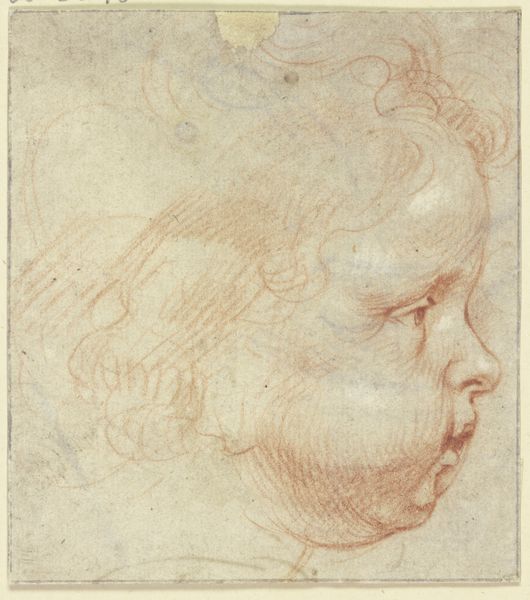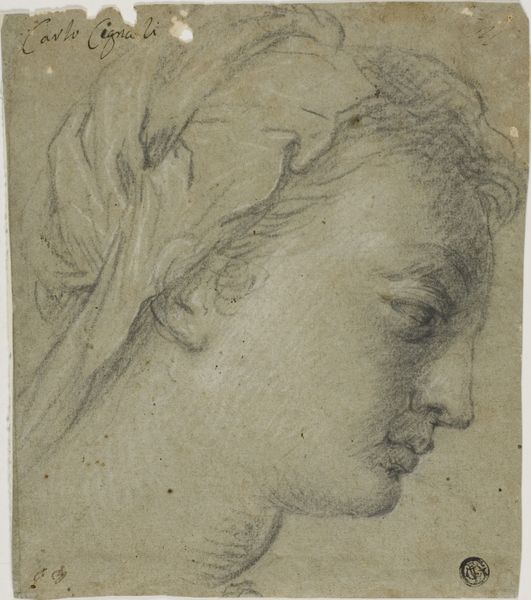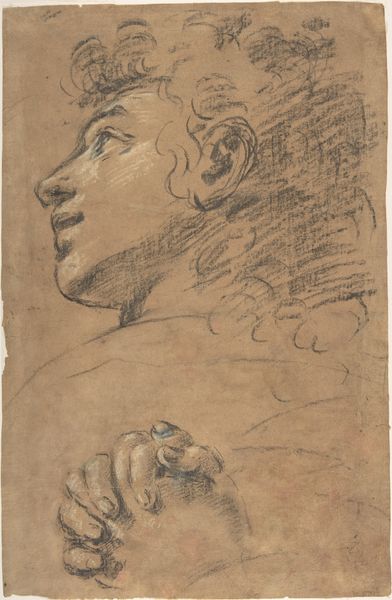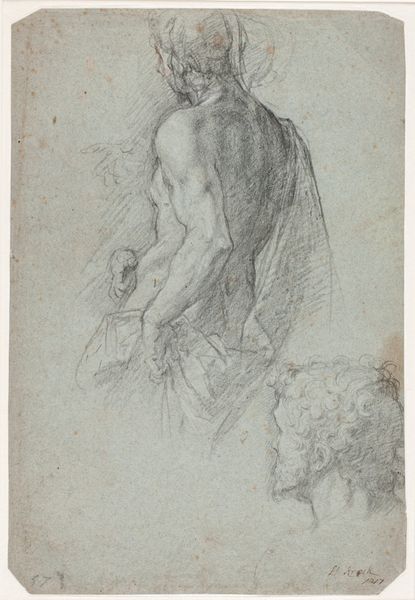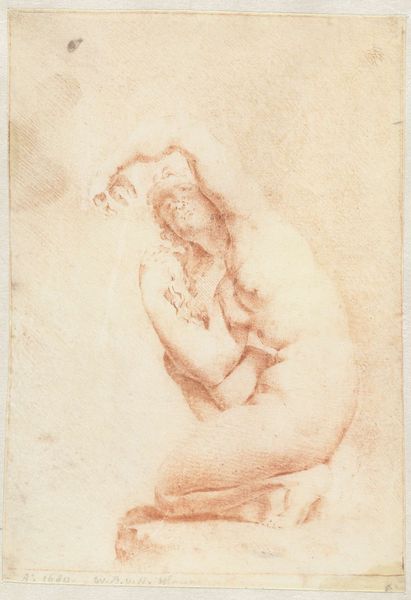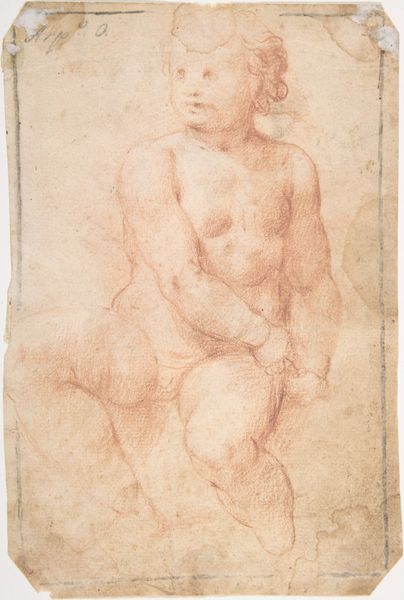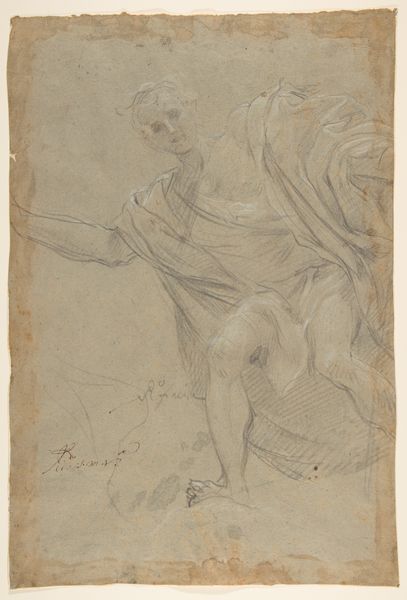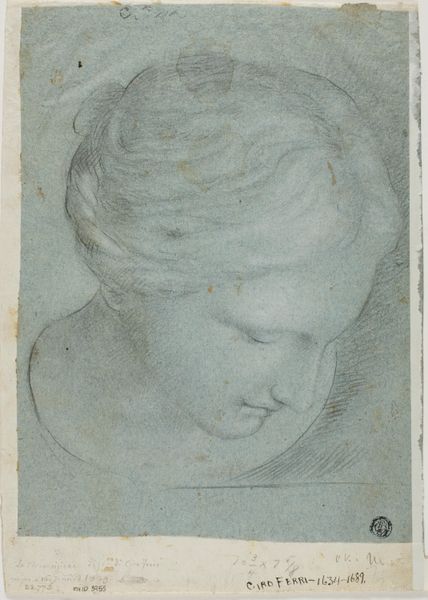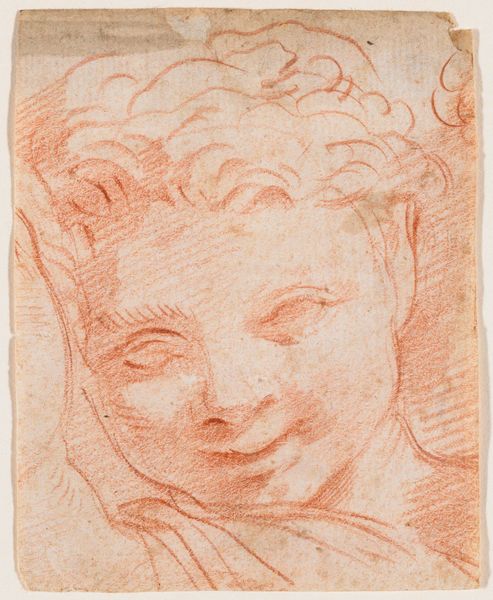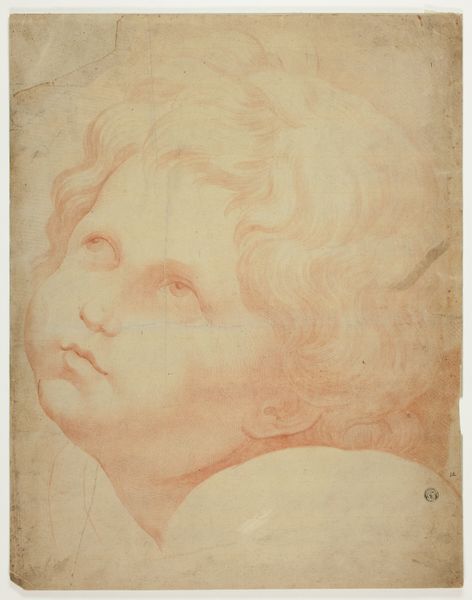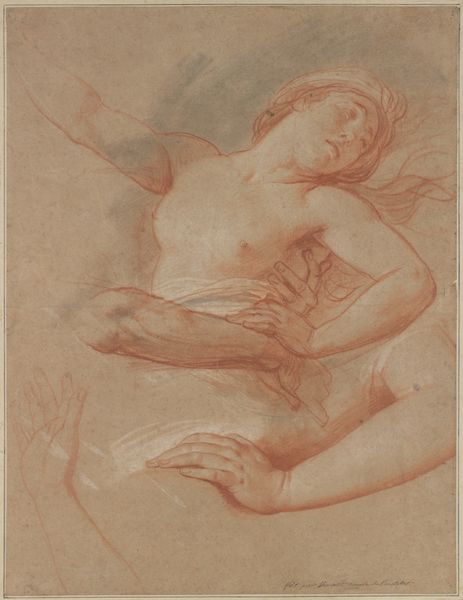
drawing, paper, charcoal
#
portrait
#
drawing
#
baroque
#
charcoal drawing
#
paper
#
charcoal
#
history-painting
Dimensions: 389 mm (height) x 240 mm (width) (bladmaal)
Editor: Here we have "Heads of St Charles Borromeo and two cherubs," a drawing by Giacinto Brandi made sometime between 1621 and 1691. The artwork consists of red charcoal lines on paper. It has an unfinished quality and seems to focus a lot on the process. What strikes you most about this piece? Curator: What I see here is labour, literally. Brandi's process is laid bare. The quick strokes of charcoal, the visible underdrawing – they reveal the artist wrestling with form and composition. How does this study serve as a record of the very means of production, of artmaking itself? And think about the cost of paper and charcoal for an artist during the Baroque era. Editor: So you're saying the materials themselves played a significant role? Curator: Absolutely. Access to quality materials, the expense of those materials, the labor invested in a piece like this – it all points to the social and economic context in which Brandi was operating. It also makes one wonder, how might the price of art supplies influenced the choice to leave it unfinished? Editor: It makes me think about how different this is from a highly polished, finished painting of the same era, intended for display and consumption. This drawing feels much more intimate. Curator: Precisely. It blurs the boundaries between high art and mere craft, between the finished product and the work involved. The use of easily available yet costly charcoal might have shaped artistic expression. Where and for whom was such an image created, knowing that this unfinished version of an artwork would outlast its maker? Editor: I hadn’t considered the economics and labour involved so explicitly, which recontextualizes the meaning of the piece and shifts the focus. Curator: Considering the making-of the work allows us to connect it to broader systems of production and the lived reality of artists, beyond traditional considerations. Editor: Thanks for highlighting those aspects. It gives me a fresh perspective for understanding art of this period.
Comments
No comments
Be the first to comment and join the conversation on the ultimate creative platform.
